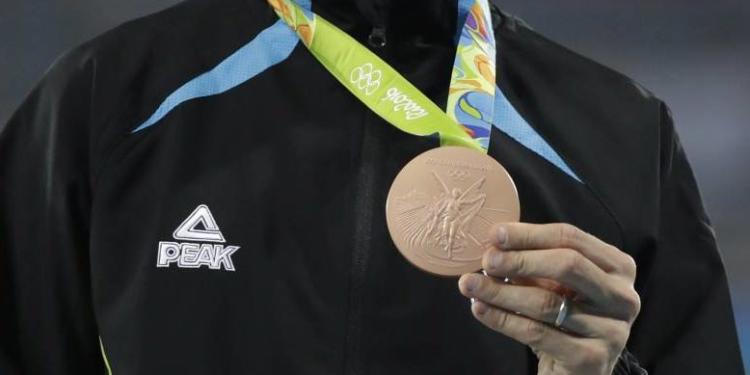What Are Olympic Medals Made Of?
Posted: February 10, 2020
Updated: February 10, 2020
-
The gold used to be solid but not any more
-
Silver is used in both the gold and silver medals
-
Bronze is still bronze

In ancient times, Olympic champions received a crown of olive leaves to mark their victories. These came from a tree near the temple of Zeus. Today the winners get medals for their efforts. In 1896, at the first Olympic Games in Athens,, top placers received silver medals since, at the time, silver was more sought after than gold. The second place winners received copper medals.
Introduction: What are Olympic medals made of?
For each Olympic competition, the top three finishers get gold, silver, and bronze medals. Though you might think that ‘Gold” means it’s solid gold, you would be wrong. The organizers are too cheap. The gold medals are not 100% gold. Many years ago, there was a period when the winning gold was actually solid gold, but now Olympic gold medals are mainly constructed from silver. Essentially they are what’s known as gilded silver. The last Olympic solid gold medal was awarded in Stockholm in 1912. Though you could always strike gold with Bovada. (Some are even saying that poker should be an Olympic sport). As a matter of fact, silver medals aren’t always 100% silver either. But they do contain the same amount of silver as the gold medal. As for the bronze medal for third-place, yes, it’s actually made of bronze.

Composition
The host city’s organizing committee determines the design and composition of Olympic medals. However, according to online sports book news in the US, there are minimum standards that must be maintained. As for the metals that wind up in the medals, current gold medals must have at least 92.5% and 6 grams of gold coating. This is a stipulation by the International Olympic Committee (IOC) regulations. The rest is normally copper. Modern Silver medals often have a bit of copper in them. The bronze medals also contain copper alloyed with zinc and sometimes tin. Having said that, there are always exceptions. For example, the silver medals at the PyeongChang Winter Olympics in 2018 had a purity of 99.9%.
- Gold and silver medals are at least 92.5% silver.
- Gold medals must be plated with at least 6 grams of gold.
- All Olympic medals must be at least 3 mm thick and at least 60 mm in diameter.
- Bronze medals are bronze, an alloy of 90% copper and 10% zinc.
Three Metals
Medals made from gold were first introduced at the St. Louis Games in 1904. But that changed four years later in 1908, when the order of gold, silver and bronze were awarded at the games in London. It should be pointed out, that up until the 1960 games in Rome, medals were pinned on to the winners shirts. It was only during these games that the medals were affixed to a chain. Later this was replaced by a ribbon.

Alternative Materials
Though we think of the Olympic medal winners as containing one of three types of precious metals, there have been exceptions. The medals from the 2008 Beijing Games contained Jade, as this was of cultural significance. During the Munich games, when 11 Israeli athletes were killed, the backs of the medal design was changed out of respect. In 1992, at the Alberta Winter Games, winners received medals with crystal adornments. At the next winter games in Lillihammer, all the medals included some sparagmite, which is a type of local granite. The Nagano games featured medals with Lacquer. Going all the way back to 1900, the Paris games didn’t even have any medals, just cups! I still maintain that chocolate ones would be the nicest!
Eco-friendly
From 2016, with the world looking to make efforts to be more environmentally friendly, the IOC took note. At the 2016 Rio games, the gold medals were free of mercury contamination. The silver medals were 30% from recycled old metal. The same story with the bronze, with the copper used also being of recycled materials. Continuing on the theme of being eco-friendly, Japan has unveiled it’s medals for the 2020 Olympic Games. All the medals are made from the recycling of telephones! When the games were first announced in 2017, the Government asked the public to help source old and unwanted phones. The gold, silver and bronze were then extracted. The same thing happened in the Vancouver 2010 Olympic and Paralympic Winter Games. Have a look at these online sports book sites in the US for Olympic bets.
Other Medals
Though Olympic gold medals are more silver than gold, there are medals which are solid gold. For example, the US Congressional Gold Medal. Also the Nobel Prize medal. This was of 23 carat gold. But after 1980 they are 18-carat green gold with a fine layer of 24-carat gold. You can have a flutter on the Nobel Prize or the next Olympics with Bovada. Check out the odds.












